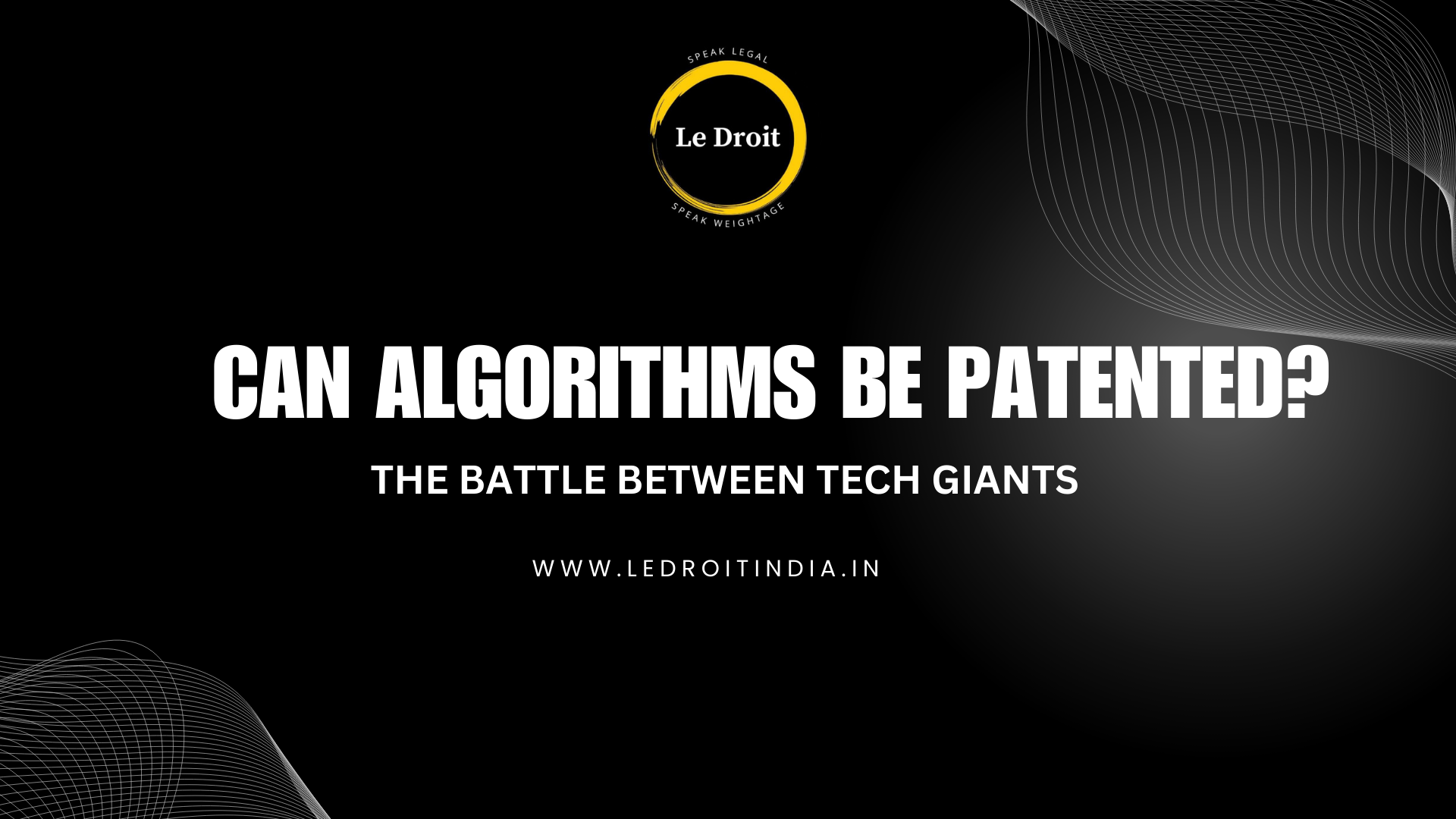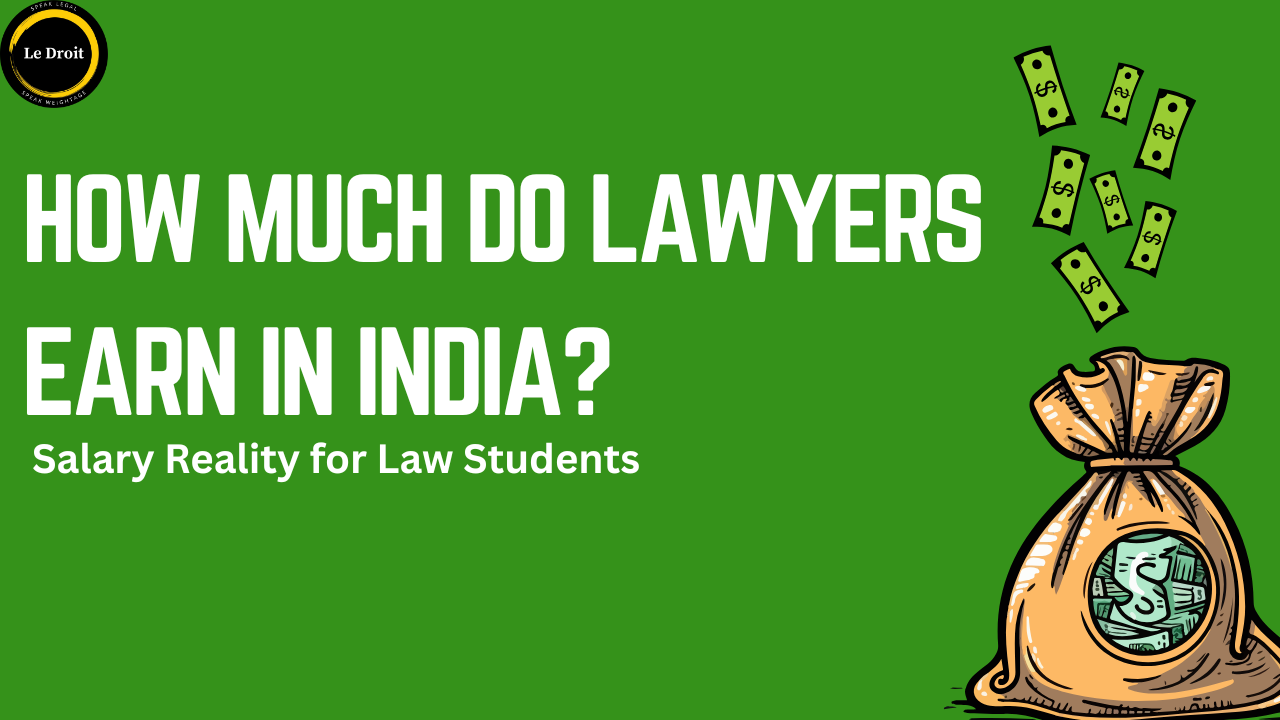This article is written by Upasna Upadhyay, Dr. Rizvi College of Law, a final- year BALLB (Hons.) student during an internship at LeDroit India.

KEYWORDS
Algorithm, patent, intellectual property law, artificial intelligence, machine learning, emerging technologies.
ABSTRACT
Algorithms are driving major changes across many industries. They are central to advances in machine learning, artificial intelligence, and new technologies. However, their great value creates challenges for intellectual property law. It is often difficult to determine if they can be patented. Algorithms are crucial in forming economies, civilizations, and industries in the current era of technological progress. Algorithms provide the foundation of numerous revolutionary technologies, ranging from financial applications to artificial intelligence.
Indeed, at the nexus of technology and intellectual property law, the patentability of algorithms is still a controversial topic. As crucial elements of contemporary inventions, algorithms propel developments in finance, artificial intelligence, and other cutting-edge fields. This article provides a complete overview of patenting algorithms. It focuses on how international rules and practical strategies are shaping the law. Furthermore, it explores the broader effects on competition, creativity, and society.
INTRODUCTION
An algorithm[1] is a collection of guidelines or directives created to carry out a certain operation or address an issue. The problem is that patent law often views algorithms as mathematical formulas or abstract concepts, which patent systems in many nations typically do not cover.
Patent law intends to protect inventions that satisfy the requirements of novelty, non-obviousness, and usefulness. However, algorithms frequently conflict with these requirements due to their abstract nature. Consequently, whether algorithms are innovations or just discoveries of natural principles is the main topic of discussion.
Balancing Rules and Reality
The core issue is balancing patent law’s concrete rules with the abstract nature of algorithms. In order to safeguard inventions, promote research and development, and give inventors financial incentives, patents are an essential instrument. However, traditional IP laws often classify algorithms as unpatentable. This is because they are seen as mathematical and not physical. This has led to a legal limbo, especially in India, where algorithms “per se” are not patentable under Section 3(k) of the Patents Act.
Despite this debate, patent offices worldwide do not seem overly worried. Experts have recognized the main issues, like ownership of AI inventions. Additionally, legal scholars and practitioners have begun discussing the effects of the increasing level of “AI supported” human inventors[2].
THE ELUSIVE NATURE OF ALGORITHMS
Algorithms are essential for new technology, but they are hard to classify using traditional intellectual property law. Algorithms are conceptual tools rather than actual objects, and they are fundamentally abstract and mathematical in contrast to practical creations.
A Dual Identity
Defining algorithms is difficult because they have a dual identity. They are, on the one hand, mathematical constructs series of actions intended to carry out computations or address issues. However, they take on a useful shape when incorporated into hardware or software, which drives procedures and produces observable outcomes[3].
A looming patent war over the internet of things (IoT) has also generated a good deal of chatter. IoT technologies—which generally refer to interconnected physical devices that collect and exchange information over the internet.[4] The complex language of algorithms makes them even more elusive. Writing algorithms in code or representing them as mathematical formulas can make them seem abstract and unrelated to practical uses. But their influence is not merely theoretical. Algorithms drive e-commerce sites’ recommendation engines, streamline supply chain operations, and facilitate ground-breaking medical and genetic discoveries.
The modular nature of algorithms allows developers to reuse and repurpose them in a variety of contexts. For instance, a developer can modify a search engine ranking optimization algorithm to increase smart grid energy efficiency. In Ferid Allani v. Union of India case, the court decided that if a computer program has a “technical effect” or a “technical contribution,” it may be patented. “The focus should be on the content of the invention rather than the format to determine the patentability of CRIs,” the court stated.[5]
CAN ALGORITHM BE PATENTED? LEGAL PERSPECTIVE
At the nexus of technology and intellectual property law is the question of whether algorithms are patentable. The jurisdiction and the particulars of the algorithm play a major role in the answer. Although algorithms are frequently not patentable as mathematical structures, their use in systems or applications that exhibit technological advances may be eligible for protection.According to Indian law, “algorithms per se” are not patentable under Section 3(k)[6] of the Patents Act. Nonetheless, protection is available for computer-related inventions (CRIs) that exhibit technical impacts, such as enhancing system performance or opening up new features. This stance was strengthened by the historic Ferid Allani v. Union of India judgment[7], which permitted patents on algorithms that resolve technological issues.
A two-step approach for patent eligibility was established in the US by the Supreme Court’s ruling in Alice Corp. v. CLS Bank International. In the US, the Supreme Court’s ruling in Alice Corp. v. CLS Bank International established a two-step approach for patent eligibility.In order to qualify as a patent-eligible application, algorithms must first pass the abstract idea test and then exhibit an original idea. Numerous algorithm patents have been declared invalid due to this strict approach, highlighting the necessity of measurable innovation[8].
Amazon, Apple, Facebook, Google, and Microsoft are the most valuable corporations in America and the leading suppliers of important products or services. They are so large and so critical to the economy that critics claim they are monopolies, able to exploit consumers, crush smaller competitors, and exert unacceptable levels of political power. In 2011, Apple sued Samsung for copying its iPhone design and set off a “patent war” between the two technology companies that raged on in the courts and in the public square for years. Yet, the Apple versus Samsung patent war was not a new phenomenon.
In Blackberry Limited Case[9], the Delhi High Court has taken a strict stance, stressing that algorithms may not be patentable even when they are implemented on hardware if they don’t make a substantial technical advance beyond the algorithm’s execution. These cases highlight how crucial it is to show a distinct and significant technological impact in order to get patent protection for algorithm-based inventions in India.
CHALLENGES
Algorithm patenting is not without its difficulties, despite these opportunities. In order to emphasize the algorithm’s technical features and useful applications, applicants must carefully craft their claims. Patent standards vary by jurisdiction, which makes things more complicated and forces inventors to modify their approaches for every market. Rapid technology improvements and court interpretations are driving changes in the global legal landscape surrounding algorithm patentability. In addition to promoting innovation, patent rules must guard against monopolization and guarantee fair access to key technologies.
- Novelty and Non-Obviousness: Technology develops so quickly that proving an invention is new and non-obvious is difficult. Prior art emerges rapidly, making the process harder. It might be intimidating to navigate the complicated global patent ecosystem with its disparate standards and methods.
- Claim Drafting: Navigating the global patent system is intimidating because of its different standards and methods. Applicants must provide sufficient detail in their claims to avoid invalidation for excessive breadth.
- Technical Effect Requirement: It is hard to prove that an algorithm creates a real-world technical effect beyond just doing math. Distinguishing a distinct technological contribution might be challenging when the boundaries between theoretical ideas and real-world applications blur.
CONCLUSION
At the nexus of intellectual property law and technological innovation, algorithm patentability raises important issues on how to fairly access core technology while encouraging advancement. As the engine underlying machine learning, artificial intelligence, and other cutting-edge technologies, algorithms will play a crucial role in determining how societies and industries develop in the future. However, their adaptability and abstract nature pose problems for legal systems around the globe. It is this feature of property rights that is so important for patents. A patent gives its owner control rights over all embodiments of a claimed invention. Technology is unpredictable. R&D leads researchers in many (often unpredictable) directions[10].
The changing legal framework has established nuanced methods for determining whether computer-related ideas are patentable, especially in countries like the US and India. The idea of “technical effect” has become a crucial requirement, which calls for algorithms to exhibit a concrete contribution that goes beyond simple mathematical computations. Patent practitioners and innovators need to take a calculated approach. To guarantee a thorough and transparent understanding of the invention, this entails working with patent examiners, carefully crafting patent claims, and being aware of the particular needs of various countries.
The legal framework for algorithm patenting must change to encourage and reward innovation as technology continues to advance at an unparalleled rate. Legislators and courts can establish a favorable environment for creating and applying cutting-edge technology by balancing the defense of intellectual property rights with the encouragement of competition.
[1]AlineIramina‘Algorithms’ <https://www.copyrightuser.org/understand/algorithms/#:~:text=As%20an%20intellectual%20property%20asset,in%20AI%20tools%20or%20software.>
[2] Tim W. Dornis ‘ARTIFICIAL INTELLIGENCE AND INNOVATION: THE END OF PATENT LAW AS WE KNOW IT’ (Yale Journal of Law & Technology, 2020) <file:///C:/Users/Lenovo/Downloads/ssrn-3668137.pdf>
[3] Meghan J. Ryan ‘SECRET ALGORITHMS, IP RIGHTS, AND THE PUBLIC INTEREST’ ( Nevada Law Journal,2020) <file:///C:/Users/Lenovo/Downloads/ssrn-3691765.pdf>
[4] See, e.g., Scott R. Peppet, Regulating the Internet of Things: First Steps Toward Managing Discrimination, Privacy, Security, and Consent, 93 TEX. L. REV. 85, 89 (2014).
[5]Ferid Allani vs Union Of India & Ors on 12 December, 2019 <https://indiankanoon.org/doc/90686424/>
[6] Section 3(k) of the Indian Patents Act of 1970
[7] Ferid Allani vs Union Of India & Ors on 12 December, 2019 <https://indiankanoon.org/doc/90686424/>
[8] Alice Corp. v. CLS Bank Int’l, 573 U.S. 208 (2014)
<https://supreme.justia.com/cases/federal/us/573/208/>
[9] Blackberry Limited vs Assistant Controller Of Patents And … on 30 August, 2024
<https://indiankanoon.org/doc/50904559/>
[10] Henry E. Smith ‘Institutions and Indirectness in Intellectual Property’ (University of Pennsylvania Law Review, 2009) <https://scholarship.law.upenn.edu/penn_law_review/vol157/iss6/13/>

